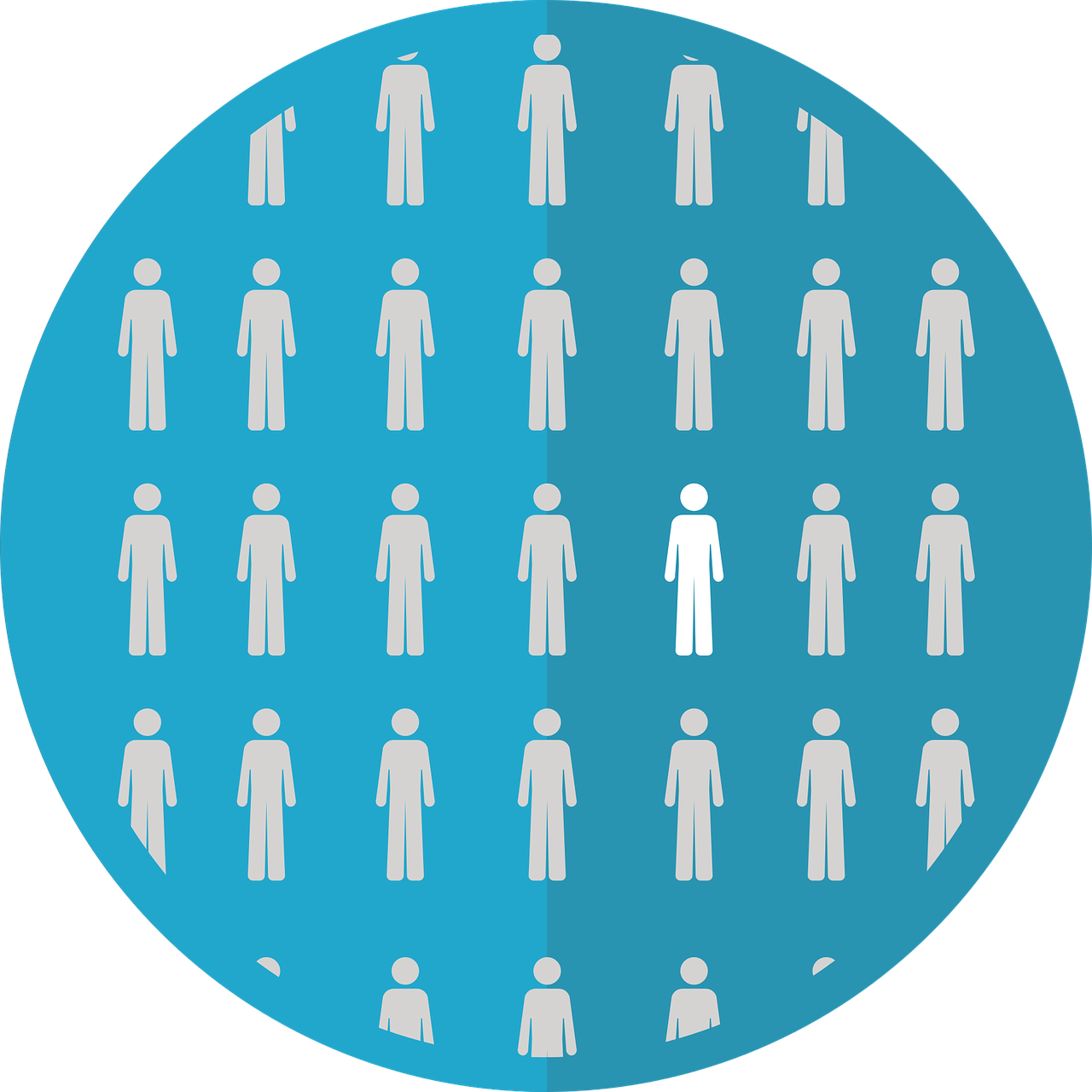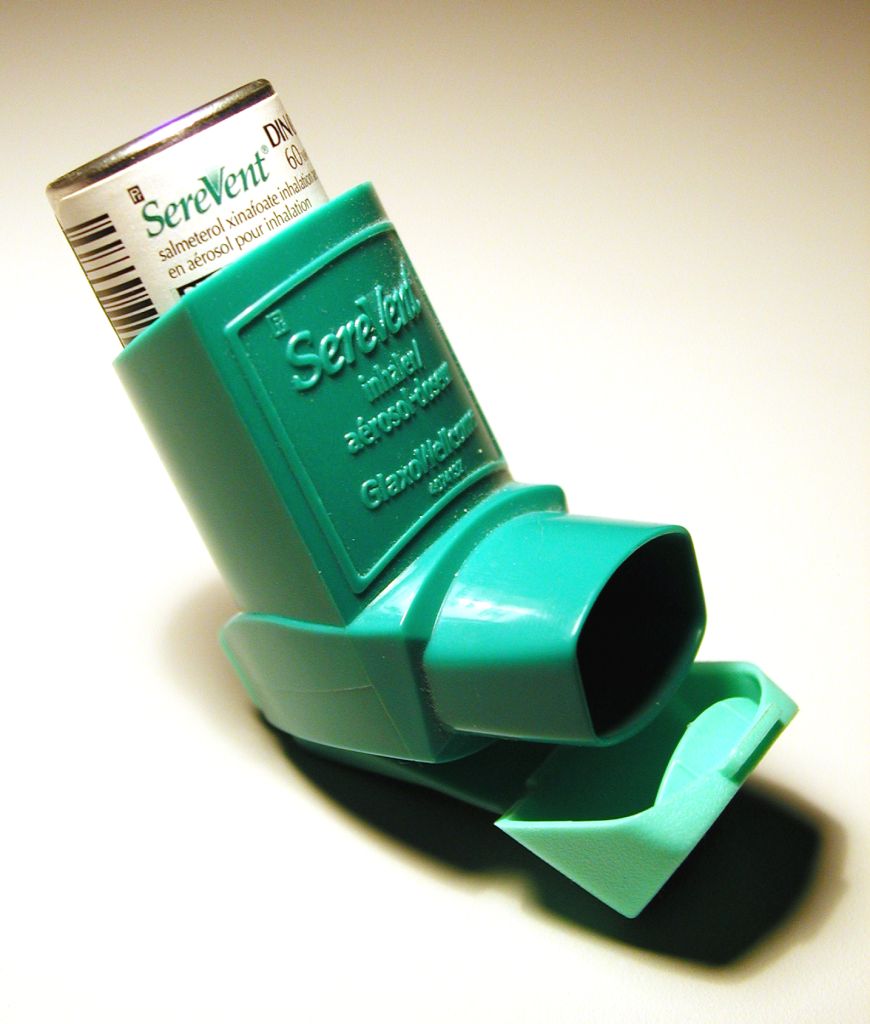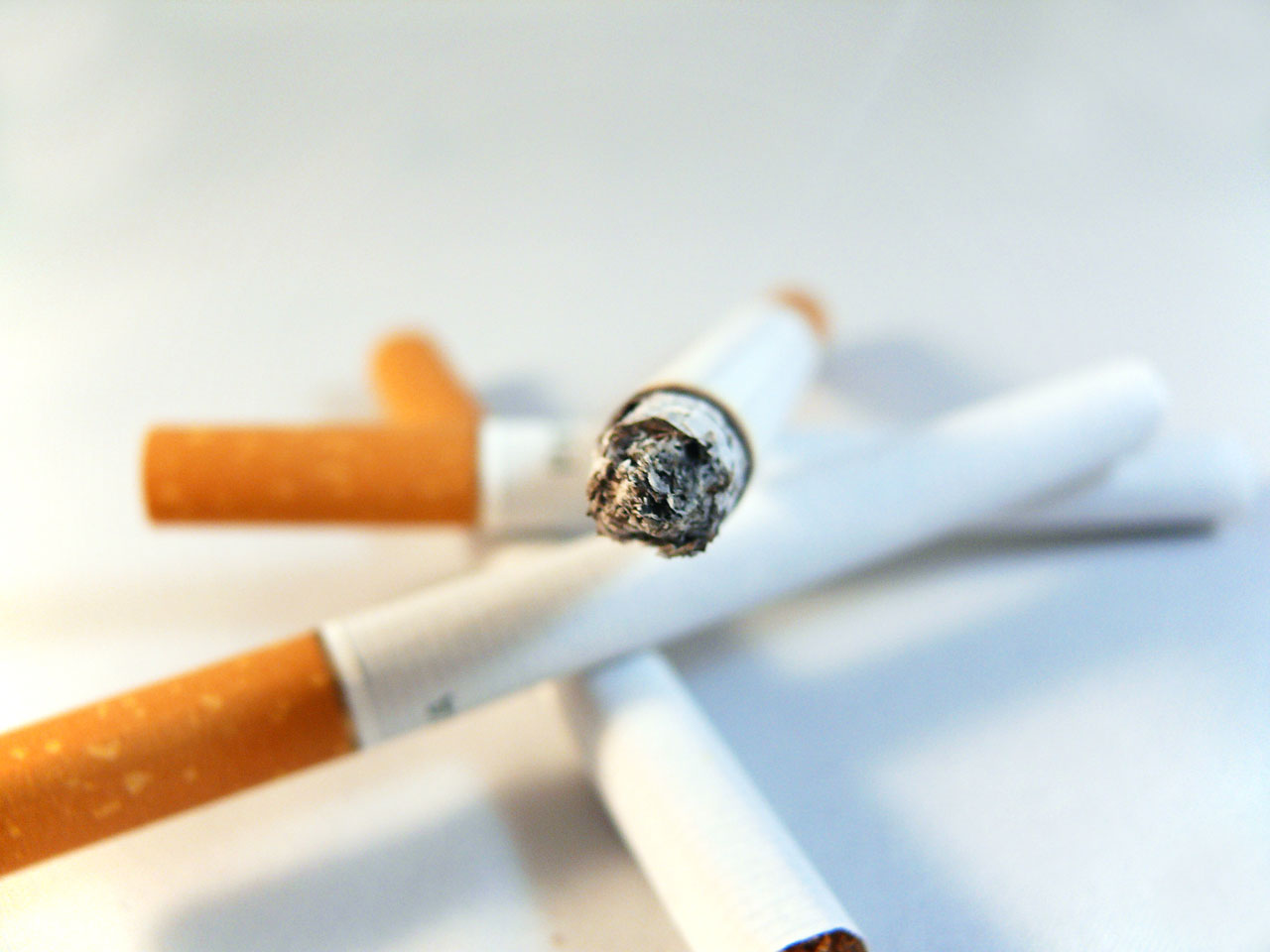Despite affecting more than 11 million people in the United States, many people do not understand COPD. Even people who have been diagnosed with COPD often have a poor understanding of how the disease actually works.
{{cta('43b79c5e-6bd6-4f02-ac27-2d038d20c146','justifycenter')}}
COPD is a relatively complex condition and it affects different people in different ways. Not everyone experiences the same symptoms, which can be confusing for patients and lead to misconceptions about the disease.
Unfortunately, myths and misconceptions about COPD can be dangerous and misdirecting. They lead to false ideas about what causes COPD and how severe the condition is, and may even discourage people with the disease from seeking treatment or listening to their doctor.
If you or someone you love has COPD, then it's vitally important to have an accurate understanding of the disease and how to treat it. Without accurate information, you may not be able to make the healthy choices and lifestyle changes that are necessary for you to manage your COPD and live a good quality of life.
In this article, we're going to take a look at some of the most common myths and misconceptions that people have about COPD. Chances are you've heard a few of these inaccurate claims before, and now it's time to set the record straight.
Common Myths and Misconceptions About COPD
Myth: COPD is a Rare Disease

According to the World Health Organization, more than 65 million people worldwide suffer from moderate or severe COPD, and that number is steadily increasing every year. But because the disease mostly affects older adults and seniors, it doesn't get the same attention as other, more visible diseases.
However, researchers estimate that up to two-thirds of COPD cases are not diagnosed, meaning that tens of millions of people have COPD and don't even know it. That's because COPD symptoms can be very mild and difficult to recognize in the early stages, and many people assume they are just normal signs of aging.
However, symptoms like frequent breathlessness and fatigue during activity are not normal aging symptoms, and are often the result of early-stage COPD. But due to misinformation and lack of awareness about the disease, many of these people go without treatment until their condition declines.
What's more, the symptoms of COPD are not always obvious to others, so many people may not realize that a friend, family member, or coworker is suffering from the disease. Because of this, many people underestimate how common it is and assume COPD is a rare disease.
Myth: COPD is Just Like Asthma

While both COPD and asthma are breathing disorders, they are very different diseases. COPD happens as a result of lung damage that accumulates over time, while asthma often occurs in otherwise healthy lungs that are extremely sensitive to irritants in the air.
Asthma can be present from birth or show up later in life as a result of exposure to respiratory irritants. It can cause episodes of wheezing and shortness of breath, often known as asthma attacks, but lung function usually returns to normal after the attack subsides.
On the other hand, COPD is a disease that usually comes later in life as a result of long-term damage to your lungs. People with COPD have permanently reduced lung function and also experience episodes of breathlessness and wheezing, known as COPD flare-ups and exacerbations.
Interestingly, COPD and asthma are somewhat connected in the sense that having asthma may put you at a greater risk of developing COPD later in life. However, COPD and asthma are distinctly separate conditions, even if some of their symptoms are similar.
Myth: COPD is Just a Breathing Disorder
While shortness of breath and difficulty breathing are the main and most common symptoms of COPD, they are definitely not the only ones. COPD can cause a variety of different symptoms including a chronic cough, wheezing, frequent respiratory infections, fatigue, depression, and more.
Although COPD primarily affects the lungs, it affects many other parts of the body as well. For example, your lungs are inextricably connected to your heart and cardiovascular system; because of this, COPD can lead to a variety of heart complications including cardiovascular disease and stroke.
COPD is also an inflammatory disease, and people with COPD show signs of elevated inflammation in their lungs, blood vessels, and elsewhere in their bodies. This alone can increases COPD patients' risk for a variety of other conditions including lung cancer and heart disease.
Myth: You Can Only Get COPD from Smoking

Although most people think of COPD as a smoking-related disease, it is not always caused by smoking. COPD is a condition that results from irreversible damage to the lungs, which can be caused by many different things, including air pollution, toxic gases, and certain health conditions.
Many people who develop COPD from non-smoking causes get it from exposure to chemicals in their workplace. For instance, people who work in manufacturing and construction can develop COPD from exposure to airborne toxins, dust, and other particulates in the air.
You can also get COPD outside the workplace from long-term exposure to things like cleaning chemicals, indoor and outdoor air pollution, and toxic gases. For example, Radon, a colorless, odorless gas known as the largest environmental cause of deadly cancers in United States, can also cause COPD.
COPD can also be caused by other medical conditions like asthma, alpha-1 antitrypsin deficiency, and frequent respiratory infections during childhood. There are many different things that can damage your lungs throughout your life and eventually cause COPD, not just smoking as many people believe.
However, smoking is still by far the most common cause of COPD, accounting for approximately 90 percent of COPD cases. That means avoiding tobacco and quitting smoking are still the most important things you can do to protect yourself from COPD.
Myth: Only Very Old People Ever Get COPD
{{cta('fa8abc2a-1e88-4fa3-82fd-1cb5b9ed43b2','justifycenter')}}
Most people develop COPD in their 50's and 60's after a lifetime of exposure to smoke or other substances that are toxic to their lungs. However, it is certainly possible to develop COPD earlier, and many people do.
In fact, although it's rare, some people are diagnosed with COPD before they even turn 40. You are much more likely to develop COPD at a young age if you have another condition like asthma or Alpha-1 antitrypsin deficiency.
Myth: Only Men Usually Get COPD

In the early 1900's, COPD was considered a “man's disease,” mostly because men were more likely to smoke tobacco. However, the number of women smokers skyrocketed in the 50's, leading to a huge increase in women diagnosed with COPD in more recent years.
Studies also show that women may be more sensitive to the irritating effects of smoke and other airborne contaminates. Because they tend to have smaller lungs, women tend to get a larger “dose” of these harmful irritants, making their lungs more susceptible to damage.
However, that doesn't mean that COPD is a “women's disease” either; COPD is still one of the leading causes of death for both men and women in the United States. While your genetics do play a role in how susceptible you are to the disease, every person still has the potential to develop COPD from long-term exposure to smoke and other respiratory irritants.
Myth: If You Stop Smoking, COPD Will Go Away
Some people mistakenly believe that once you quit smoking, the symptoms of COPD will go away. While quitting smoking can reduce some of your symptoms, it cannot reverse the damage to your lungs that has already been done.
Unfortunately, there is no known cure for COPD; it is a chronic, life-long disease. Once you have COPD you are stuck with it, and the best thing you can do is seek treatment and try to prevent it from getting worse.
Although this is a heartbreaking reality to accept, understanding the severity of the disease is important for taking your lung health seriously. In order to prevent further damage to your lungs and maintain a good quality of living, you need to diligently follow your COPD treatment plan for the rest of your life.
The good news is that by following an effective treatment plan and taking an active role in managing your disease, you can minimize your symptoms and live an active life for many years to come. However, it takes a lot of hard work and dedication to living a healthy lifestyle every day.
Myth: COPD is Not Treatable

On the opposite end of the spectrum there is the misconception that COPD cannot be treated at all. And, while it's true that there is no real cure for COPD, there are many medications, treatments, and lifestyle changes that can significantly reduce COPD symptoms.
In fact, early detection and treatment for COPD is vital for maintaining your health and quality of life. The sooner you get diagnosed, the sooner you can begin treatment and prevent further damage to your lungs.
Every person who is diagnosed with COPD should receive a detailed health assessment and a personalized treatment plan from their doctor. The standard course of treatment includes using inhalers, steroids, antibiotics, lifestyle changes, and sometimes supplemental oxygen to manage respiratory symptoms and infections.
An effective COPD treatment plan will help you keep your symptoms under control and can even slow down the disease's progression. You can breathe easier, be more active, and live a better quality of life when you work with your doctor to effectively manage your symptoms.
Myth: There's No Point in Quitting Smoking if You Already Have COPD

Even though quitting smoking will not cure your COPD, it can help protect your lungs from further decline. If you have COPD, you should try to stop smoking immediately to prevent the disease from rapidly getting worse.
It's never too late to quit smoking, and it has the potential to significantly improve your quality of life. It can also help reduce COPD symptoms like coughing and wheezing and lower your risk for life-threatening respiratory infections and exacerbations.
Research shows that people with COPD who quit smoking have fewer COPD flare-ups and are less likely to be admitted into a hospital for their symptoms. It also reduces your chance of dying from COPD.
What's more, quitting can improve your health in other ways that are unrelated to COPD. It can improve your exercise endurance, your cardiovascular health, and reduce your risk for other smoking-related diseases like lung cancer, heart disease, and stroke.
It's important to understand that, if you continue to smoke after your COPD diagnosis, then you are aggravating your disease and gambling with your life. Smoking can even make certain COPD treatments (such as corticosteroid medications) less effective, which puts your lungs and your health at even greater risk.
Myth: It Doesn't Matter if You are Overweight and Have COPD
Being overweight puts extra strain on your body, including your heart and lungs. It also puts extra weight on your chest when you lie down, which can make it much more difficult to breathe if you have COPD.
Maintaining a healthy BMI is important for keeping all of your organs healthy, including your heart and lungs. Studies show that being obese can also increase inflammation in your body, which can make COPD-related inflammation in your lungs and other organs even worse.
Obesity also increases your chance of developing other chronic conditions that can worsen COPD, including heart disease, diabetes, and obstructive sleep apnea. It also makes it more difficult to exercise and stay active, which is vital for keeping your lungs and body healthy when you have COPD.
Myth: Your Diet Doesn't Affect Your COPD

What you eat is directly related to your overall health, and this is especially true for people with COPD. Eating the right foods and maintaining a healthy weight can boost your energy levels and make it easier to breathe.
In fact, because they have to use more energy to breathe, people with COPD often need more calories and nutrients per day to meet their body's needs. On the other hand, eating too much can lead to being overweight or obese, which makes it both harder to exercise and harder to breathe.
The most important thing to do for a healthy, balanced diet is to eat meals full of vitamin-rich fruits and vegetables, whole grains, healthy fats, and lean proteins. However, you should limit the amount of carbohydrates you eat, because studies show that breaking down carbohydrates can actually put extra strain on your lungs.
People with COPD are particularly prone to malnutrition and fatigue, both of which can be combated with a healthy diet. Eating right will give you the energy you need to stay active and supply your lungs with the fuel they need to operate efficiently.
To learn more about how your diet affects your COPD, check out our previous post on healthy foods for COPD patients. You can also get some more useful diet tips from our article on foods to avoid if you have COPD.
Myth: Exercising is Dangerous if You Have COPD
People with COPD often experience symptoms like coughing and shortness of breath when they exercise. This leads some to believe that exercise is dangerous and that they should avoid physical activity.
In reality, though, exercise is one of the best things you can do to improve your health and quality of life if you have COPD. All good COPD treatment plans include regular exercise, and staying active can help prevent your COPD from getting worse.
While you shouldn't exert yourself too much and you should always give yourself time to rest when you feel extremely short of breath, exercise is safe and healthy for the vast majority of COPD patients. It can strengthen your heart, breathing muscles, and skeletal muscles, and reduce your chances of developing other age-related and COPD-related diseases.
If you are worried about exercising, talk to your doctor to see what kinds of activities are safe and effective for you to do. Your doctor can also help you better manage your symptoms, which can help you breathe better when you exercise.
There are even special exercise programs—known as pulmonary rehabilitation classes—that are developed specifically to help people with COPD learn how to exercise while keeping their breathing and other COPD symptoms under control. If you struggle with exercise and staying active because of your disease, talk to your doctor about enrolling in a pulmonary rehabilitation class.
Myth: You Cannot Have a Satisfying Sex Life with COPD

Many people believe that because COPD makes breathing and exercising more difficult, it will inevitably hurt their sex life as well. However, while it may make certain sexual activities a little more difficult, you can still have a healthy and fulfilling sex life with COPD.
Even if you struggle with shortness of breath, you can keep your symptoms under control with diet, exercise, medications, and other COPD treatments. You may even be able to attend a pulmonary rehabilitation class if you have significant trouble breathing during physical activity.
Also, it's important to remember that there are countless ways to experience sex and intimacy, and it's normal for your sex life to change as you age. That doesn't mean that it has to be any less exciting or satisfying than it was before; it just means you might have to be more flexible or willing to try new positions that are more comfortable with COPD.
Myth: Once You Start Oxygen Therapy, There is No Going Back

May COPD patients are afraid to start supplemental oxygen therapy because they fear that once they start, they will be tethered to their oxygen machine for life. While it is true that some COPD patients have to use Oxygen 24/7, this is not the case for most patients.
You might need to use oxygen occasionally as a supplement to other COPD treatments, or you may only need it for a short period of time while you are recovering from an exacerbation. You can also use supplemental oxygen to help you breathe when you exercise and reduce shortness of breath throughout the day.
Most patients start out using supplemental oxygen less frequently, and slowly increase their oxygen use as their disease progresses. For many patients, this starts with using oxygen during physical activities or at night to make it easier to breathe during sleep.
While some people see supplemental oxygen as a limitation, in reality, it can actually enable you to do more and improve your quality of life. Supplemental oxygen helps you breathe better, sleep better, have more energy, and can reduce your risk of serious COPD complications like heart disease and pulmonary hypertension.
Myth: You Cannot Live a Healthy, Fulfilling Life with COPD

While COPD is a serious disease, it is not a death sentence or an end to your life as you know it. You can still live a healthy, happy, and active life even if you have COPD.
You may have to make some serious lifestyle changes to protect your lungs and treat your disease, but that doesn't mean you can't live a normal life. In fact, if you follow your treatment plan carefully, including eating a healthy diet and exercising, you may even find that you have more energy and feel better than before you were diagnosed.
The more you care for your health and adhere to your COPD treatments, the amore likely you are to maintain the lung function you still have for longer. While COPD inevitably gets worse over time, you can live comfortably with the disease for many years and continue to do all of the things you enjoy.
Conclusion

